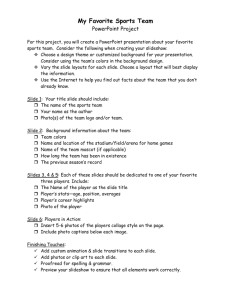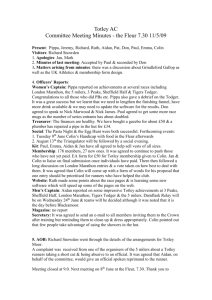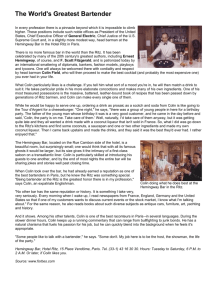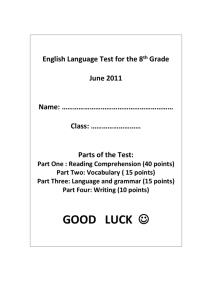ROADTRIP - Lakeside School
advertisement
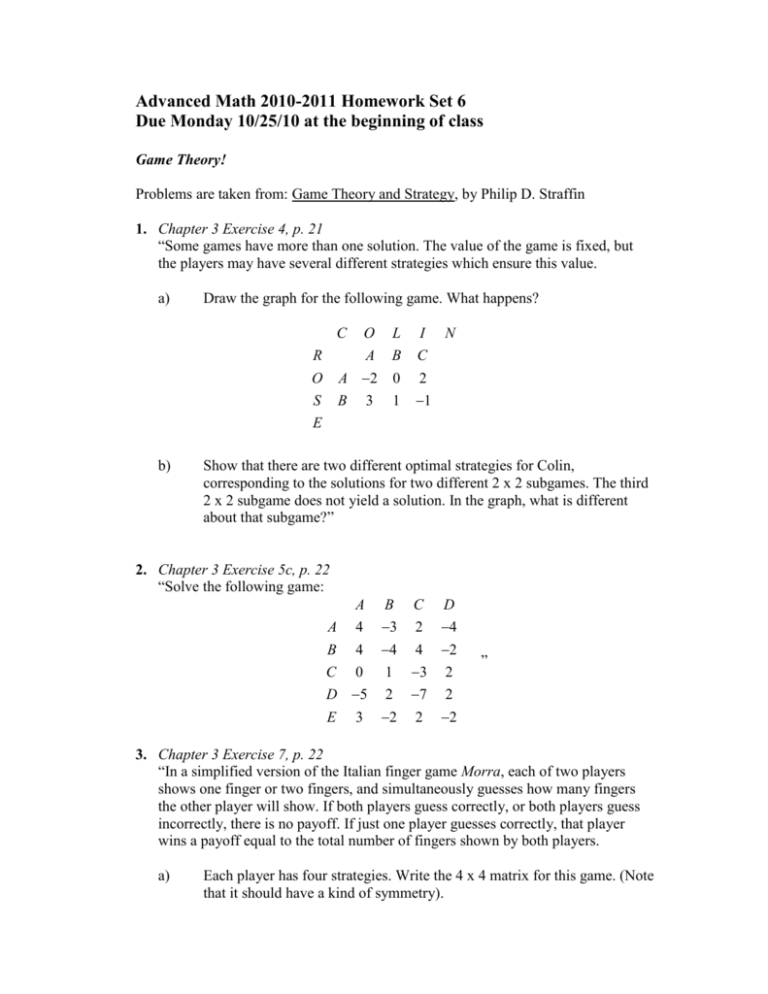
Advanced Math 2010-2011 Homework Set 6 Due Monday 10/25/10 at the beginning of class Game Theory! Problems are taken from: Game Theory and Strategy, by Philip D. Straffin 1. Chapter 3 Exercise 4, p. 21 “Some games have more than one solution. The value of the game is fixed, but the players may have several different strategies which ensure this value. a) Draw the graph for the following game. What happens? C b) O L I R O A B A 2 0 C 2 S E B 1 3 1 N Show that there are two different optimal strategies for Colin, corresponding to the solutions for two different 2 x 2 subgames. The third 2 x 2 subgame does not yield a solution. In the graph, what is different about that subgame?” 2. Chapter 3 Exercise 5c, p. 22 “Solve the following game: A B C D 4 4 3 4 2 4 4 2 C 0 D 5 1 2 3 7 2 2 E 2 2 2 A B 3 ” 3. Chapter 3 Exercise 7, p. 22 “In a simplified version of the Italian finger game Morra, each of two players shows one finger or two fingers, and simultaneously guesses how many fingers the other player will show. If both players guess correctly, or both players guess incorrectly, there is no payoff. If just one player guesses correctly, that player wins a payoff equal to the total number of fingers shown by both players. a) Each player has four strategies. Write the 4 x 4 matrix for this game. (Note that it should have a kind of symmetry). b) Since the game is symmetric, its value should be zero. Show that the strategy 5/12 show two-guess one, 7/12 show one-guess two, is optimal for both players. (In actual Morra, players can show one, two or three fingers. For its solution, see [Williams, 1986], pages 163-165).” 4. Game from class (also found on p. 20 called Game 3.4) Analyze the following game to determine the optimal strategies for Rose and Colin, as well as the value of the game. Compare your results with the experimental probabilities we found in class. A B C D E F A 4 4 3 2 3 3 B 1 1 2 0 0 4 C 1 2 1 1 2 3 5. Chapter 3 Exercise 9, p. 22 (This is the hard one!) “Suppose Rose and Colin play many rounds of a game by the following procedure. In the first round, each player chooses a pure strategy arbitrarily, say Rose A and Colin A. In the (n+1)st round, each player plays the pure strategy which has the best expected value against the mixture of strategies used by the other player in the first n rounds. a) Write a computer program to carry out this procedure for the game we played from class (see Exercise 4 above). You should find tha the players’ mixtures converge to their optimal mixed strategies. (This is a celebrated theorem of Julia Robinson (1951)) How soon do Colin’s non-active strategies stop being played? b) (Suggested by Peter Ungar) It would be dangerous to play strictly according to this procedure, because your opponent might realize what you are doing. Suppose Colin plays the game in Exercise 4 by this procedure, but Rose realizes he is doing it and in each round plays her best response to what she knows Colin is going to do. Adapt your computer program to investigate the result. Poor Colin will do badly, but will the long-run mixtures still converge to the optimal mixed strategies?” On Exercise 5, you may work with a partner, as I’m aware that the programming expertise varies from person to person. Just let me know who you worked with, and write up your own solution.






